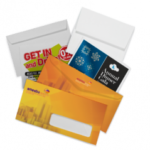Large events like conferences, festivals, and trade shows can be overwhelming for attendees, with crowds, numerous booths, and sprawling venues. Effective directional signage is crucial to ensure a smooth flow of people and a positive experience. Banners, in particular, serve as an ideal solution for guiding attendees, combining visibility, flexibility, and cost-effectiveness. With the right banner printing services, event organizers can create clear, easy-to-read navigation banners that help attendees find their way efficiently. Here’s why banners make great directional signage and some essential tips for designing them.
Why Use Banners for Directional Signage?
High Visibility
Large banners can be placed at key entrances, exits, hallways, and near booths or stages. Their size ensures attendees can spot them from a distance, making them more effective than smaller signs or digital alternatives in bustling environments. By utilizing the best printing services, event organizers can produce high-quality banners with vibrant colors and clear text that stand out.
Flexibility in Placement
Unlike permanent signage, banners can be easily moved or adjusted throughout the event. This makes them ideal for multi-day events where setups might change or when certain areas become more critical than others at different times.
Cost-Effective
Banners are a cost-efficient solution for temporary signage, especially when compared to other types of directional displays. Whether it’s a one-time event or an annual occasion, banners offer an affordable way to provide attendees with essential information.
Branding Opportunity
Banners not only serve as directional tools but also as a platform for branding. Incorporating event logos, color schemes, and sponsors into the design allows for consistent branding throughout the venue, enhancing the overall aesthetic and experience.
Tips for Designing Effective Directional Banners
Use Simple, Clear Text
The purpose of directional signage is to provide clear instructions, so simplicity is key. Use concise language like “Main Stage,” “Exhibition Hall,” or “Registration Here.” Banner Printing Services in Florida suggests avoiding cluttering the banner with excessive information. The focus should be on quick, easy-to-read directions.
Bold Fonts and High Contrast
When designing banners for navigation, bold fonts and high contrast between the text and background are crucial. Attendees need to be able to read the signage at a glance, even from a distance. Opt for clear fonts and avoid overly decorative typefaces that can make reading difficult.
Incorporate Arrows and Icons
Incorporating arrows and universally understood icons (such as restrooms, exits, or food areas) helps guide attendees more effectively. Arrows, in particular, are vital for providing clear direction. These visual cues are easy for attendees to follow, even if they’re in a rush or unfamiliar with the event layout.
Consider the Banner’s Placement
Banners should be strategically placed in high-traffic areas where people naturally look for guidance, such as entrances, near escalators or elevators, and at junctions. Consider the height at which the banner will be displayed; it should be at eye level or above, depending on the space.
Color Coding for Sections
For larger events, consider using color coding on the banners to distinguish between different sections or areas. For example, you could use green for the main stage, blue for breakout rooms, and red for emergency exits. This adds an extra layer of clarity, helping attendees navigate more efficiently.
Weather-Resistant Materials
For outdoor events, it’s important to use weather-resistant materials to ensure the longevity and readability of the banners. With the Best Printing Services In Florida, you can invest in durable vinyl or mesh banners that can withstand wind, rain, and sunlight without fading or tearing.
With the help of professional banner printing services, event organizers can produce high-quality directional banners that not only help with navigation but also enhance branding and contribute to the event’s visual appeal.


